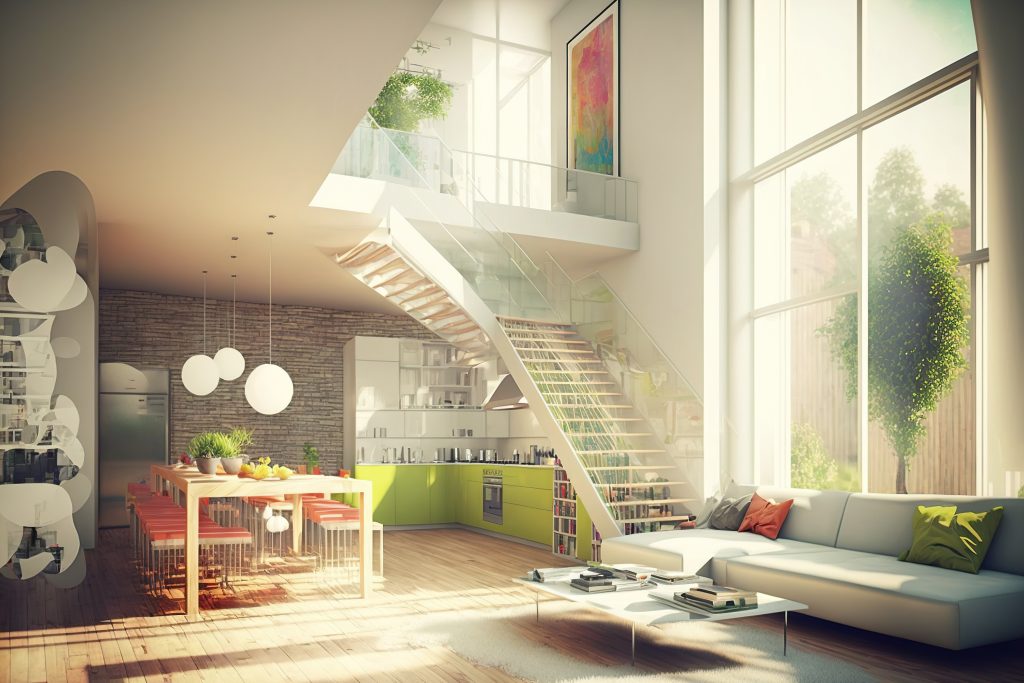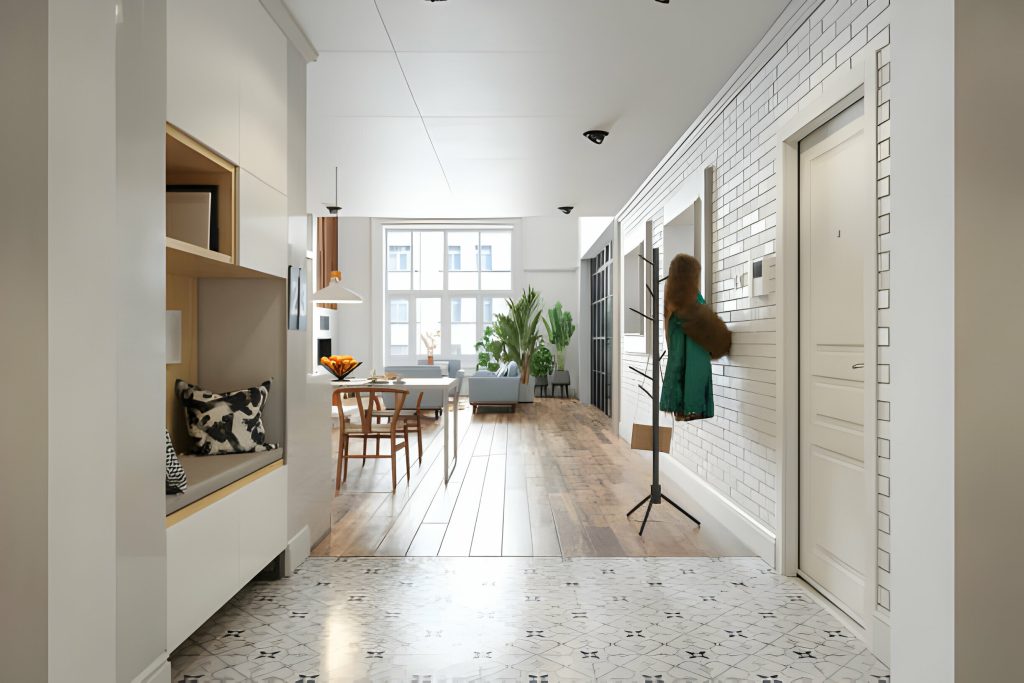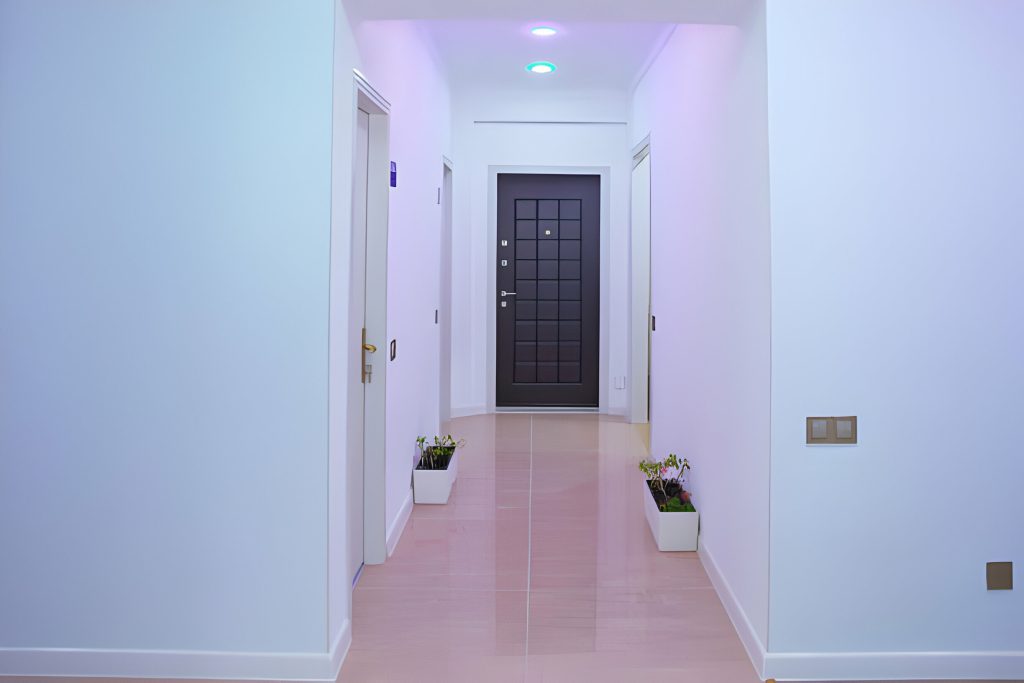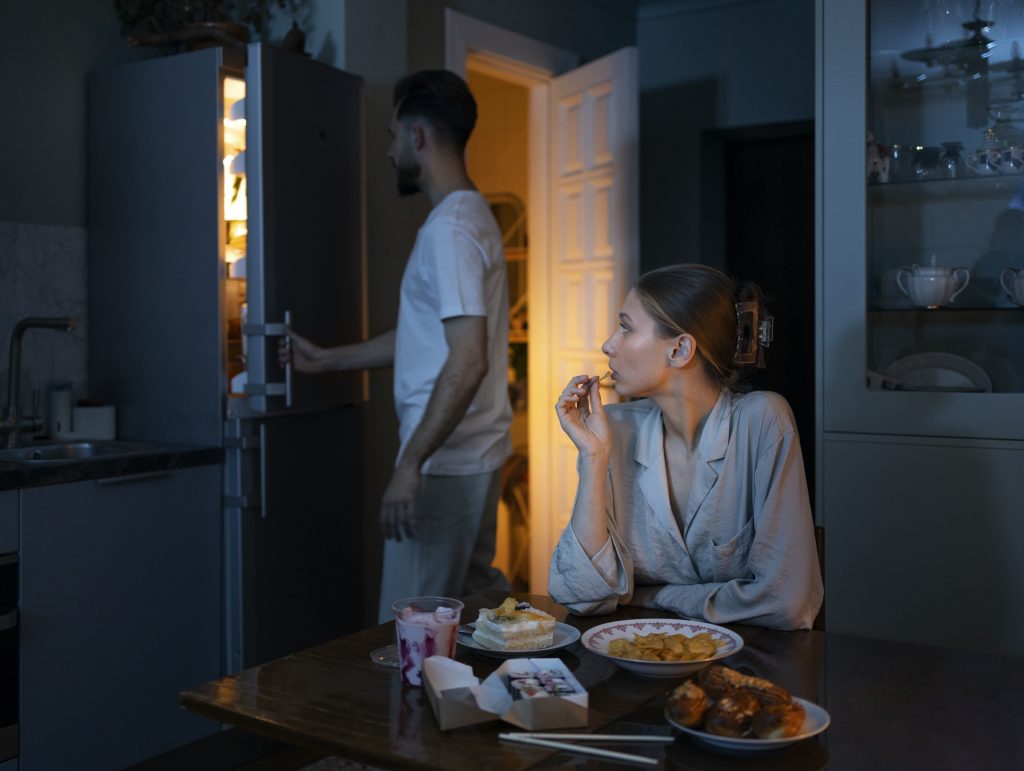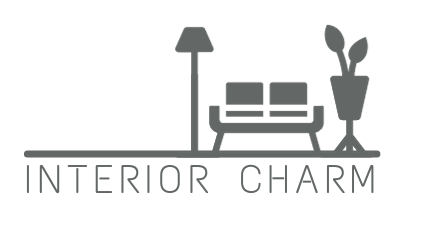The debate surrounding this topic has been going on for quite some time, with proponents on both sides arguing for the benefits of their preferred choice. But what is the truth behind this theory? Is there a definitive answer? In this discussion, we will explore the various factors to consider when deciding whether to go for light or dark cabinets in your small kitchen, and hopefully shed some light on this intriguing topic.
Design Style Considerations
When considering the design style for your small kitchen, it is important to carefully choose cabinet colors that will complement the overall aesthetic and maximize the space. Design style is a crucial factor to consider, as it sets the tone for your kitchen. Whether you prefer a modern, traditional, or eclectic look, the cabinet colors can enhance the style you desire.
Space limitations should also be taken into account when selecting cabinet colors. Lighter colors tend to make a space appear larger and more open, while darker colors can create a cozy and intimate atmosphere. Understanding color psychology is key in choosing the right cabinet colors. For example, white cabinets can create a bright and welcoming atmosphere, while gray cabinets bring warmth and allow for creative license.
Personal preference plays a significant role as well. Consider the mood and personality you want to create in your kitchen. Do you want it to feel vibrant and energetic or calm and soothing? Choose colors that resonate with your personal style and create the desired ambiance.
Lastly, don’t forget to consider the lighting effects in your kitchen. Natural light and artificial lighting can greatly impact the appearance of cabinet colors. Take into account the direction and intensity of light sources to ensure that the cabinet colors are showcased in the best possible way.
Mood and Personality Reflection
The cabinet colors you choose for your small kitchen can have a significant impact on the mood and personality of the space. Color psychology plays a crucial role in creating ambiance and setting the tone for your kitchen. Your personal style and design preferences should also be considered when selecting cabinet colors. Here are some key points to keep in mind:
- Color trends: Stay up to date with the latest color trends in kitchen design. Bold and bright colors are becoming more popular and can add a unique design element to your small kitchen.
- Creating ambiance: Different cabinet colors can evoke different moods. White cabinets create a bright and welcoming atmosphere, while gray cabinets bring warmth and allow for creative license. Black cabinets achieve a striking contrast and work well with angular designs, while blue cabinets add elegance and warmth.
- Design impact: The color of your cabinets can greatly impact the overall design of your small kitchen. Consider how the cabinet colors will interact with other elements such as countertops, backsplash, and flooring to create a cohesive and visually appealing space.
Inspiration and Research
To find inspiration and conduct thorough research for selecting the perfect cabinet colors for your small kitchen, explore various design resources and online platforms. These sources can provide you with a wealth of information and ideas to help you make an informed decision. Start by looking at interior design magazines, websites, and social media platforms like Pinterest and Instagram. These platforms are filled with beautiful images of small kitchen designs that can inspire you and give you a sense of what colors and styles resonate with you.
Another important aspect to consider is color psychology. Different colors can evoke different emotions and moods, so it’s essential to choose colors that align with the atmosphere you want to create in your small kitchen. For example, lighter colors like white and pale grey can make a space feel more open and airy, while darker colors like navy blue and rich grey can add a sense of sophistication and coziness.
In addition to color, you should also consider the lighting options in your small kitchen. Lighting plays a crucial role in enhancing the overall design and can dramatically impact how the cabinet colors appear. Make sure to assess the natural light sources in your kitchen and consider incorporating artificial lighting options like pendant lights or under-cabinet lighting to create a well-lit and visually appealing space.
Lastly, don’t be afraid to experiment with contrasting elements in your small kitchen design. Contrasting colors, materials, and textures can add visual interest and depth to the space. For example, you can pair light-colored cabinets with dark countertops or incorporate open shelving with dark cabinet colors to create a unique and dynamic look.
Buyer Considerations
Consider the preferences and needs of potential buyers when choosing colors for your small kitchen cabinets. It is important to take into account buyer preferences, size considerations, resale value, design style, and personal taste. Here are some key points to consider:
- Buyer Preferences: Consider the current trends and popular color choices among buyers. This can help ensure that your kitchen appeals to a wider range of potential buyers.
- Size Considerations: In a small kitchen, lighter colors can create a sense of openness and make the space appear larger. However, dark cabinets can also work if balanced properly with other elements in the kitchen design.
- Resale Value: Light cabinets are generally considered timeless and can boost the resale value of your home. However, dark cabinets can also add a sense of sophistication and luxury, which may appeal to certain buyers.
Ultimately, it is important to strike a balance between your personal taste and what will appeal to potential buyers. By considering buyer preferences, size considerations, resale value, design style, and personal taste, you can choose the right cabinet colors for your small kitchen that will both satisfy your own preferences and attract potential buyers.
Cabinet Colors and Mood
When choosing cabinet colors for your small kitchen, it is important to consider how they can impact the mood and atmosphere of the space. The impact of color on mood is well-documented, and choosing the right color scheme for your cabinets can make a significant difference in the overall feel of your kitchen. Different colors have different psychological effects, and understanding these effects can help you create a cohesive kitchen design that enhances the space. For example, white cabinets create a bright and welcoming atmosphere, while gray cabinets bring warmth and allow for creative license. Black cabinets achieve a striking contrast and work well with angular designs, while blue cabinets add elegance and warmth. Bright and bold colors are also becoming more common and can add a unique design element to your small kitchen. By using color strategically in your cabinet choices, you can create a mood and atmosphere that suits your personal style and enhances the overall look and feel of your kitchen.
Exploring Color Possibilities
There are no rules to follow when it comes to selecting a cabinet color for your small kitchen, allowing you to explore unlimited possibilities that reflect your individual style. Here are some color options to consider:
- Custom paint options: With custom paint options, you can truly personalize your kitchen and choose a color that speaks to your unique taste and personality.
- Bright and bold colors: If you want to make a statement, consider opting for bright and bold colors like vibrant yellows or bold blues. These colors can add a pop of energy and create a lively atmosphere in your small kitchen.
- Intense red cabinets: For a modern or modern retro kitchen, intense red cabinets can be a striking choice. Red is a bold and attention-grabbing color that can add a touch of drama and sophistication to your space.
- Light lime color: If you want to create a bright and soothing ambiance, light lime cabinets can be a great option. This color is simultaneously vibrant and calming, making it perfect for small kitchens.
- Dark green tiles: To add depth and richness to your kitchen, consider incorporating dark green tiles. This earthy color can create a sense of warmth and elegance, especially when paired with light-colored cabinets.
With these color possibilities, you can create a small kitchen that is not only functional but also reflects your personal style and taste. So, don’t be afraid to experiment and explore different colors to find the perfect cabinet color for your small kitchen.
Two-Toned Cabinets
To add visual interest and create a focal point in your small kitchen, consider incorporating two-toned cabinets. Two-toned cabinets offer a unique and stylish design option for your kitchen. By using contrasting combinations of colors, you can create a striking and visually appealing look. Color blocking techniques can be employed to separate different areas of your kitchen, such as upper and lower cabinets or an island and perimeter cabinets. Harmonizing hues can also be used to create a cohesive and balanced look. Get creative with color pairings, using bold and unexpected combinations to make a statement. Look for two-toned design inspiration online or in interior design publications to find ideas that suit your personal style and taste. Whether you choose to pair light and dark tones for a dramatic effect, or opt for more subtle shades, two-toned cabinets can elevate the design of your small kitchen and make it a standout feature in your home.
Painted or Stained Cabinets?
Painted or stained cabinets? Choosing between these two options for your kitchen cabinets is an important decision that will impact the overall look and feel of your space. To help you make an informed choice, here are some pros and cons to consider:
Pros of painted cabinets:
- Smoother and flawless look
- Customization options for colors
- Can provide a crisp and clean aesthetic
Pros of stained cabinets:
- Highlight natural character of the wood
- Adds visual interest with wood grains and knots
- Can enhance the beauty of the cabinets
Ultimately, the decision between painted or stained cabinets comes down to personal preference and desired aesthetic. Painted cabinets offer a smoother and more customized look, while stained cabinets bring out the natural beauty of the wood. Both options have their own unique appeal and can make a visual impact in your kitchen.
In terms of maintenance, painted cabinets may require more upkeep to maintain their pristine appearance, as they can show scratches and chips more easily. Stained cabinets, on the other hand, may require occasional re-staining to keep them looking their best.
Consider your style preferences, the visual impact you want to achieve, and the maintenance requirements when deciding between painted or stained cabinets for your kitchen.
Balancing Dark Cabinets in a Small Kitchen
When it comes to balancing dark cabinets in a small kitchen, it’s important to find ways to create a sense of balance and prevent the space from feeling overpowering. While dark cabinets can add a sophisticated and elegant touch to your kitchen, they can also make the space feel smaller and more closed off. To counteract this, consider incorporating some dark cabinet alternatives, such as using lighter colored units at eye level to draw the eye away from the dark cabinets and create a sense of balance. Another option is to create a focal point by using dark cabinets along the lower section of the kitchen, and then incorporating a kitchen island or dining table with dark colors to create a contrasting effect and make the space look more expansive. Maximizing space is also key in a small kitchen, so consider using glass tiles to create a transition between dark and light elements, and incorporating plenty of lighting solutions, such as overhead or under-cabinet lights, to distract attention away from the dark cabinets. By implementing these small kitchen design hacks, you can successfully balance dark cabinets in your space and create a visually appealing and functional kitchen.
Contrasting Dark Cabinets With Light Elements
Contrast your dark cabinets with light elements to create a visually stunning and balanced kitchen design. Here are some key ways to achieve this:
- Light countertops: Pairing light-colored countertops with dark cabinets creates a striking contrast and adds brightness to the overall space. Consider options like white marble or quartz countertops to reflect light and create an airy feel.
- Glass tiles: Incorporating glass tiles as a backsplash can serve as a transition between the dark cabinets and lighter elements in the kitchen. The reflective properties of glass can help bring in more light and add a touch of elegance to the design.
- Dark green accents: Dark green is a trendy color choice that complements dark cabinets beautifully. Introduce this hue through accessories like kitchen towels, rugs, or painted accent walls to add depth and visual interest to the space.
- Open shelving: Incorporating open shelving alongside your dark cabinets can create a design statement. It allows for the display of lighter-colored dishware, glassware, and decorative items, breaking up the visual weight of the dark cabinets and adding a sense of openness.
- Multiple light sources: To distract attention away from the dark cabinets, make sure to incorporate multiple light sources in your kitchen. This can include overhead lighting, under-cabinet lights, and pendant lights. By illuminating different areas of the kitchen, you create a well-lit and balanced environment.
